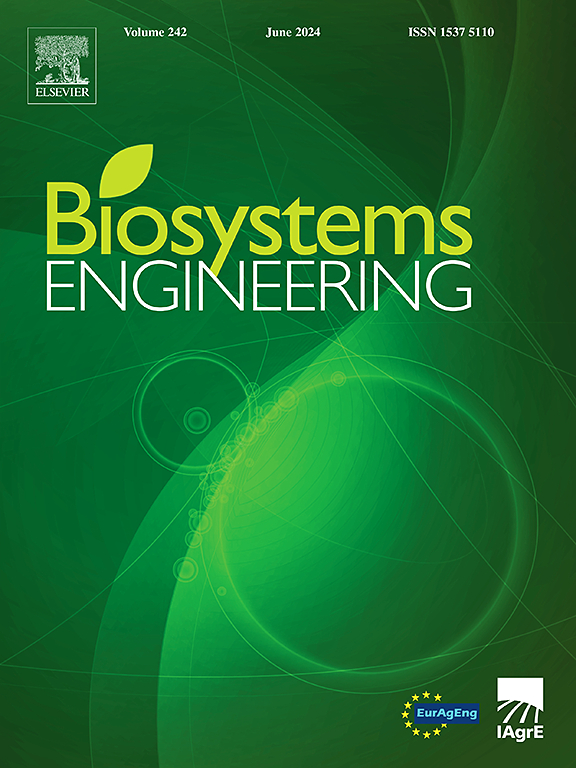Long-term prediction of wound closure in residual damaged trees using Markov chain analysis
IF 4.4
1区 农林科学
Q1 AGRICULTURAL ENGINEERING
引用次数: 0
Abstract
Understanding the wound healing dynamics in damaged residual trees along skid trail margins is important for maintaining stand health and minimizing financial losses during final harvesting. This study deployed a Markov chain decision process to model wound healing times, integrating complex treatments of trail design factors (traffic intensity, decommissioning age) and wound characteristics (severity) to inform postharvest management strategies, including retaining or early thinning interventions before residual trees exceed their biological longevity. Data on wound size and healing rates were collected from standing residual trees along four abandoned skid trails in mixed hardwood forests subjected to ground-based skidding operations in northern Iran. Healing times varied significantly, ranging from 39 years for trees on recently decommissioned trails (<5 yrs) to 54 years for those on older trails (>15 yrs), influenced by wound severity and traffic levels. Light-bark wounds healed within 20 years, while severe wounds influencing the phloem or fibre required up to 60 years. Increased traffic intensity was associated with more severe damage and extended healing times, with trees adjacent to lightly trafficked trails recovered within 50 years, compared to up to 70 years for those near heavily trafficked trails. This study validates the utility of Markov chain models in predicting wound healing durations and informing postharvest management decisions. Given the extended healing times (50–70 yrs) and the risk of infection spread, strategic skid trail planning, employment of skilled operators, and periodic thinning interventions are recommended to maintain the health and economic value of damaged residual trees.
马尔可夫链分析在残伤树木伤口愈合长期预测中的应用
了解滑行道边缘受损残留树木的伤口愈合动态,对于保持林分健康和最大限度地减少最终采伐期间的经济损失非常重要。本研究采用马尔可夫链决策过程来模拟伤口愈合时间,综合处理滑行道设计因素(交通强度、退役年龄)和伤口特征(严重程度),为采后管理策略提供信息,包括在残留树木超过其生物寿命之前进行保留或早期疏伐干预。在伊朗北部经过地面滑行作业的硬木混交林中,从四条废弃的滑行道上的残留树木中收集了有关伤口大小和愈合率的数据。受伤口严重程度和交通水平的影响,伤口愈合时间差异很大,从新近退役小径上树木的 39 年(5 年)到较老小径上树木的 54 年(15 年)不等。树皮上的轻伤在 20 年内愈合,而影响韧皮部或纤维的重伤则需要长达 60 年的时间。交通强度的增加与更严重的损伤和更长的愈合时间有关,靠近轻度交通路径的树木可在 50 年内恢复,而靠近重度交通路径的树木则需要长达 70 年的时间才能恢复。这项研究验证了马尔可夫链模型在预测伤口愈合时间和采后管理决策方面的实用性。鉴于伤口愈合时间较长(50-70 年)以及感染扩散的风险,建议对滑行路径进行战略性规划,雇用熟练的操作人员,并定期进行疏伐干预,以保持受损残留树木的健康和经济价值。
本文章由计算机程序翻译,如有差异,请以英文原文为准。
求助全文
约1分钟内获得全文
求助全文
来源期刊

Biosystems Engineering
农林科学-农业工程
CiteScore
10.60
自引率
7.80%
发文量
239
审稿时长
53 days
期刊介绍:
Biosystems Engineering publishes research in engineering and the physical sciences that represent advances in understanding or modelling of the performance of biological systems for sustainable developments in land use and the environment, agriculture and amenity, bioproduction processes and the food chain. The subject matter of the journal reflects the wide range and interdisciplinary nature of research in engineering for biological systems.
 求助内容:
求助内容: 应助结果提醒方式:
应助结果提醒方式:


